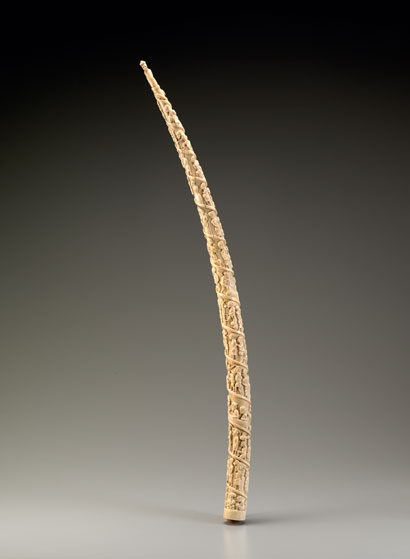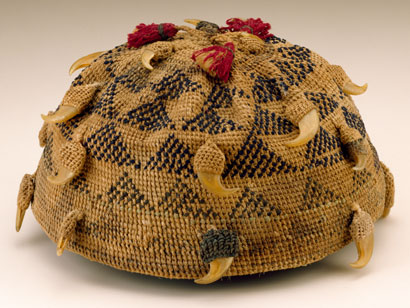
Click on image for a detail
This ivory tusk is an unusually fine example of an important tradition of export art. An artist living along the Loango coast in the Congo region almost certainly used iron tools to render, with exquisite detail and lively animation, a series of pictorial sequences in relief that spiral the length of the tusk. Scenes depict aspects of traditional village life-the man climbing a tree to tap liquid for palm wine-and the influences of foreign trade-the man on the finial wearing both a European coat and a ruler's traditional fiber cap. |

A 1482 Portuguese account noted that persons of authority wore a variety of headdresses to signify their power and status. Because the Kongo peoples associate the strength, cunning and ferocity of important chiefs with that of the leopard, caps decorated with leopard claws are among the most prestigious.
Image credits:
Kongo peoples, Loango coast, Republic of the Congo and Angola
Late 19th century
Ivory
Length 95.7 cm (37 11/16 in.)
National Museum of African Art, museum purchase,
2007-1-3
Hat
Kongo peoples, Democratic Republic of the Congo
Late 19th century
Raffia, leopard claw
Width 21.3 cm (8 3/8 in.)
National Museum of African Art, museum purchase,
95-2-1
|

